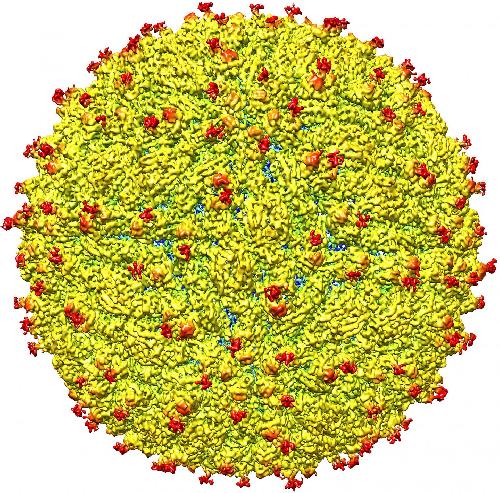A near-atomic level map of Zika virus shows its structure to be largely similar to that of dengue virus and other flaviviruses, but with a notable difference in one key surface protein, report scientists funded by the National Institute of Allergy and Infectious Diseases (NIAID), part of the National Institutes of Health. The variation in the Zika envelope (E) glycoproteins-- 180 of which are packed on the virus's outer shell-- may provide clues to better understand how Zika virus enters human cells and suggests ways to combat the virus with drugs or vaccines aimed at the newly detailed region.
NIAID grantees Richard Kuhn, Ph.D., Michael Rossmann, Ph.D., and their colleagues at Purdue University created the picture of a mature Zika virus particle with a technique called cryo-electron microscropy. The process involves freezing virus particles and firing a stream of high-energy electrons through the sample to create tens of thousands of two-dimensional electron micrograph images that are then combined to yield a composite high-resolution, three-dimensional view of the virus. The team included NIAID investigator Theodore Pierson, Ph.D.
The difference visualized by the researchers is in a region of the E glycoprotein that flaviviruses may use to attach to some human cells. The variation in the E glycoprotein of Zika virus could explain the ability of the virus to attack nerve cells, as well as the associations of Zika virus infection with birth defects and the autoimmune-neurological Guillian-Barré syndrome. The structure could inform vaccine development, as the Zika E glycoprotein is a key target of immune responses against the virus. The information may also be useful for designing treatments such as antiviral drugs or antibodies that interfere with E glycoprotein function. Further, details on the structural differences between E glycoprotein of Zika virus and the same protein in dengue virus may make it possible to create diagnostic tests that can distinguish Zika virus infection from dengue infection, a critical need in countries where both Zika and dengue viruses are circulating.





Comments